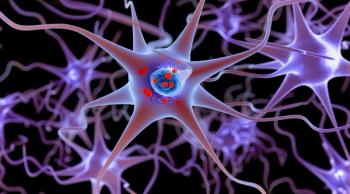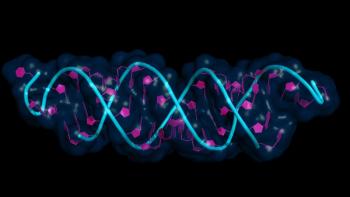
- BioPharm International's BP Elements, August 2023
- Volume 2
- Issue 8
Exploring Producer Cell Development for Lentiviral Vector Manufacturing
Stable producer cell lines show real promise despite continued development challenges.
Lentiviral vectors (LVVs) offer numerous advantages for production of adoptive cell therapies. Integration of LVV genetic material into host-cell DNA enables stable and long-term expression of the therapeutic gene in the target cells, leading to longer therapeutic effects once the cells are infused into the patient. LVVs are also highly efficient at transducing a wide range of cell types and can have a large carrying capacity relative to adeno-associated virus (AAV), allowing the delivery of larger or multiple therapeutic genes. Furthermore, LVVs can be engineered to include safety features, such as self-inactivation mechanisms or inducible gene expression systems, which can aid in regulation of transgene expression or provide the ability to eliminate modified cells if necessary.
The most commonly used platform for generating LVVs in the R&D and clinical space relies on transfection of four individual plasmids. The disruption of LVV genes required for competent viral replication have been eliminated, while the structural components required to assemble virus particles have been retained. This advancement maximally reduces the potential recombination events that could lead to undesirable replication of competent lentivirus (RCL) formation in patients. While safety has been addressed, transient transfection of four plasmids to generate LVVs in this manner is challenging. Sourcing the plasmids can be difficult, and the efficiency of the reaction is influenced by numerous process parameters.
There is significant interest, therefore, in developing stable producer cell lines that simplify LVV production, afford high yields of high-purity LVVs, and measurably lower costs for manufacturing.
Producer-cell primer
Producer cells are generated by introducing the gene of interest (GOI) into an LVV packaging cell line that already has stably integrated the vector-coding LVV structural proteins and a viral envelope to impart cellular tropism. This stable producer cell line then undergoes multiple rounds of clonal selection, and if a suspension system for better scalability is desirable, then subsequent serum-free suspension adaptation is required. The result is a monoclonal, highly characterized, GOI-specific stable producer cell line.
To overcome the cytotoxicity to producer cells associated with constitutive over-expression of the LVV envelope and the regulatory protein Rev required to generate viral products, two approaches have been developed. With inducible systems, the expression of viral cytotoxic proteins is regulated by the addition of an inducer or the removal of a suppressor to control initiation of LVV production at a defined timepoint and thus limit expression of the cytotoxic viral products to the time of production only, explains Luca Peterfay, process development scientist II at Charles River. Common systems turn transcription on or off using tetracycline or doxycycline (an analog of tetracycline) antibiotics (Tet-on and Tet-off systems, respectively) via the tetracycline response element (TRE).
In constitutive systems, continuous expression of all vector components occurs, with nontoxic envelope alternatives to vesicular stomatitis virus G (VSV-G) engineered into the producer cells. “This approach limits titers and transduction efficiency compared to VSV-G enveloped systems, but allows multiple vector harvests, extends production campaigns, and reduces overall LVV manufacturing costs,” Peterfay observes.
Many advantages to using producer cells
There are many reasons to use producer cells for viral-vector manufacturing, says Brian Tomkowicz, senior director of R&D for Center for Breakthrough Medicines. In addition to being designed to prevent the replication of viral vectors and eliminate the risk of generating replication-competent viruses (RCVs), producer cells are engineered to lack essential viral genes or have other safety features to minimize the chance of vector release or dissemination during production, he notes.
Simplified process flows can also be achieved with producer cells due to elimination of the multi-plasmid transient co-transfection step, observes Peterfay. As importantly, producer cells enable efficient vector production of high-quality viral vectors through incorporation of all the necessary components for viral protein expression, assembly, and packaging of the therapeutic gene, according to Tomkowicz. Furthermore, producer cells can also be grown in large-scale bioreactors, allowing the production of large quantities of viral vectors. Tomkowicz also adds that the implementation of limited perfusion-based systems for continuous production at scale will enable the scalability crucial for meeting rapidly growing demand while simultaneously lowering manufacturing costs.
Production of viral vectors with consistent quality and characteristics, meanwhile, ensures reproducibility and consistency throughout the manufacturing process, contends Tomkowicz. The use of monoclonal, highly characterized producer cells in chemically defined media (CDM) without animal-derived products increases reproducibility and reduces batch-to-batch variation, Peterfay agrees.
Not least of the benefits Tomkowicz highlights is reduced costs due to elimination of the need for large quantities of good manufacturing practice (GMP)-grade plasmids and avoidance of negative impacts of bringing foreign DNA into production cells. Eliminating the need to source large quantities of high-purity plasmids also reduces timelines, adds Peterfay. Both agree that if a constitutive system is employed, longer processing periods and multiple harvests can cut viral-vector production costs even further.
Limitations must be considered
The many advantages of using producer cell lines must be balanced with the limitations of deploying this approach. The generation of the stable producer cells is an additional step prior to the initiation of production, and this step can potentially increase preclinical timelines by several months, according to Peterfay. “The generation of stable producer cells is a complex and time-consuming procedure, which entails tedious cell-line development due to the numerous clonal isolation steps followed by extensive screening procedures,” she explains.
For the constitutive approach, Peterfay also notes that due to replacement of the VSV-G with a low-cytotoxicity alternative envelope, titers may not be as high as those achieved via transient transfection, and transduction efficiency can also be lower. “The limitation in titers can be compensated by longer processing times and multiple harvests; however, due to the reduced transduction efficiency higher doses might be required to achieve the required therapeutic effect in patients,” she says.
Finally, Peterfay points out that due to the large size of the viral insert introduced into the host cell, the long-term stability of producer cells is a concern, as compromised stability will likely result in reduced productivity.
Realizing target quality attributes is essential
When developing producer cells for LVV production, the goal is to engineer cells with several important target quality attributes. A short population doubling time of less than 24 hours is ideal to reduce GMP occupancy time and operating costs, according to Peterfay. High productivity and the ability to produce high titers of LVVs is essential to ensure efficient and effective delivery of therapeutic genes to target cells, Tomkowicz adds. High cell densities should be achievable in chemically defined media and prolonged harvest times should be tolerated, notes Peterfay.
Producer cells should maintain the integrity and stability of the LVV genome during production, according to Tomkowicz. “This attribute is crucial to prevent genetic alterations or rearrangements that could impact vector functionality or safety,” he says. Peterfay also stresses the importance of genetic stability without selective pressure, as the addition of antibiotics during GMP manufacturing significantly increases costs and may pose regulatory concerns.
“It is also essential,” states Tomkowicz, “that producer cells do not generate RCLs during vector production, as they could lead to uncontrolled viral replication and potential adverse effects in patients receiving gene therapy.” In addition, he observes that producer cells should have minimal levels of impurities such as host-cell proteins and DNA contaminants and demonstrate consistent performance over multiple production runs, maintaining consistent vector yield and quality attributes.
“These properties and characteristics are important to ensure the safety, efficacy, and consistency of the LVV production process,” Tomkowicz emphasizes. “High vector yield enables cost-effective production and efficient delivery to target cells. Genetic stability and absence of RCLs reduce the risk of adverse effects. Low impurities ensure the purity and safety of the final vector product. Consistent performance enables reliable and reproducible manufacturing processes, which are critical for clinical applications,” he concludes.
Multi-step development process
Producer-cell generation for LVV production can be proprietary and company-specific, but typically involves a similar series of steps, according to both Peterfay and Tomkowicz. The process starts with vector design, which is then followed by transfection or transduction to stably integrate the vector coding elements into the packaging cell genome. Next is selection and clonal expansion of host cells that have successfully integrated the vector. Single-cell cloning is performed in adherent, stable producer cells to generate a monoclonal population. Finally, through improvements in next-generation sequencing, rapid and cost-effective mapping of producer cell lines ensures that integration events during clonal selection did not activate proto-oncogenes, thus providing added safety for patients.
Characterization and screening assays, such as vector yield determination, genomic analysis, and testing for RCL generation are then performed on the resulting cell lines to evaluate their vector production capabilities, genetic stability, absence of RCLs, and other desired properties and identify clones with highest yields, fastest growth, and high stability. If the stable producer cells are intended for use in suspension processes, suspension adaptation is then performed. The selected cell lines are then scaled up in culture and process optimization pursued to maximize vector yield.
The resulting production process is validated to ensure consistency, quality, and safety, and appropriate quality-control measures are implemented to monitor critical parameters and assess the final vector product for impurities and potency.
Not a simple endeavor
While the steps involved in producer cell development can be readily outlined, effective implementation is not an easy task. Maintaining long-term stability of the integrated vector can be challenging, says Tomkowicz, as it may be prone to rearrangements, deletions, or silencing over time, affecting vector production and consistency. Ensuring stable integration of the lentiviral vector into the producer cells’ genome is, therefore, crucial, but defining the number of generations where the selected clone is stable without selective pressure and maintains high productivity can be difficult, Peterfay observes.
Preventing the generation of RCLs during vector production is equally critical for safety reasons, but controlling and eliminating any potential RCL contaminants is a challenge that requires rigorous testing and screening protocols, according to Tomkowicz. Similarly, optimizing productivity and achieving consistent high-level expression of viral proteins can be challenging, as it depends on the host cell line, transfection/transduction efficiency, and the vector design itself. “Developing clonal producer cell lines with consistent vector production can be challenging due to genetic heterogeneity within the initial population of transfected/transduced cells. It may require multiple rounds of cloning and screening to identify and select stable and high-yielding clones,” he comments.
Tomkowicz adds that screening of stably integrated clones for LV packaging can be exhaustive. It is necessary to ensure the appropriate stoichiometry and high copy number of integration events to achieve optimal viral titers of intact virus particles. In addition, induction systems must be compatible with GMP manufacturing, be completely off when not desired, and have a large dynamic range upon induction.
Potential negative impacts of the transgene on the host are a secondary concern when trying to generate producer lines, according to Tomkowicz. For instance, if expression of the GOI during clonal selection impacts overall cell health another level of GOI silencing may be required.
Peterfay, meanwhile, points to the need for the constitutive LVV producer cells to overcome the limitations of using VSV-G to improve transduction efficacy in order to lower the doses required.
These challenges are magnified by the difficulties associated with implementing robust assays and screening methods to assess vector quality, absence of contaminants, and genetic stability, according to Tomkowicz. “Developing effective assays is essential to achieve thorough characterization and quality control of producer cells to ensure the safety, purity, and potency of final LVV products,” he says.
Scaling up producer cell lines from small-scale research settings to large-scale manufacturing can also pose challenges. “Adapting the production process to bioreactors, maintaining optimal culture conditions, and ensuring consistency and reproducibility at a larger scale require careful process development and optimization,” Tomkowicz states.
Ongoing efforts to address key challenges
Several technologies and approaches have been developed to help address the key challenges associated with produce cell development for LVV manufacturing. Vector engineering is a focus, according to Tomkowicz, with the goal of optimizing vector design and incorporating genetic elements that enhance stability, expression, and packaging efficiency, thereby improving vector integration and stability in producer cells. “To that end, gene editing tools such as CRISPR/Cas9 are being used to precisely engineer producer cells, facilitating targeted integration of the vector and reducing genetic heterogeneity,” he says.
The cytotoxic and cytostatic effects of some viral products in inducible systems, such as tetracycline-inducible expression systems, are limited by better controlling of gene expression through the use of inducible promoters, according to Peterfay. In constitutive or continuous packaging systems such as STAR cells, meanwhile, the cytotoxic limitations of VSV-G are reduced by nontoxic or low-toxicity envelope glycoproteins suitable for LVV pseudotyping, she says.
There is also some interest, Peterfay notes, in exploring the engineering of cell lines other than HEK293 derivatives, such as primary human amniocytes, to increase robustness and tolerance. Tomkowicz agrees: “There are efforts directed at developing novel cell lines or modifying existing ones with improved characteristics such as higher vector production capacity, enhanced stability, and reduced immunogenicity.”
Some companies are implementing more stringent screening and selection processes to identify and isolate high-yielding, genetically stable producer cell clones through methods such as fluorescence-activated cell sorting (FACS) or limiting dilution, Tomkowicz adds. To overcome labor-intensive cell engineering and cloning steps, meanwhile, Peterfay observes that high-throughput automated equipment solutions are being developed. Similarly, Tomkowicz observes that advanced analytical techniques and quality-control measures to detect and eliminate RCLs are also being developed.
Regulatory considerations
Given that the use of producer cell lines for LVV production is a relatively new technology, developers of these solutions must be aware of various regulatory considerations when pursuing this route for GMP LVV manufacturing.
The main regulatory concern, according to Peterfay, is the potential for genetic drift in LVV producer cells due to the presence of the large LV insert. “Developers need to define the lifespan and the number of generations over which producer cells are stable to ensure that the product generated is consistent and has the same quality attributes from younger and older generations,” she explains. Stable producer cells also must remain stable without selection pressure, as the use of pharmaceutical-grade antibiotics is very expensive and can raise regulatory concerns, she adds.
Overall, notes Tomkowicz, the regulatory landscape regarding the use of stable producer cells for production of LVVs used in adoptive cell therapy manufacture is complex and varies across different regions. FDA (1) and the European Medicines Agency (EMA) (2), for instance, have specific guidelines and requirements for the development and manufacture of gene therapies using LVVs. Topics addressed include genetic stability, safety, quality control, process validation, GMP compliance, and specific requirements for regulatory filing, among others.
High expectations
Even with the challenges facing the development of stable, effective producer cell lines for LVV manufacturing, both Peterfay and Tomkowicz believe eventual widespread adoption of this strategy to be likely, but there is uncertainty as to the timeline.
“If a stable cell line with the packaging plasmids was created that meets all the quality attributes discussed earlier, it could be patented and offered to clients to simplify their production flows and reduce timelines and costs,” Peterfay comments. Only the transgene would then require subsequent stable transfection using the stable producer cells already containing the packaging plasmids, which would substantially reduce the timelines for operation. She estimates that it will take approximately 10 years before producer cell lines for LVV manufacturing gain full trust and routine use in the biopharmaceutical industry, with the exact timing a function of both continued stable producer cell development work and regulatory/clinical expectations.
Tomkowicz does not specify any timeline, but agrees that given the rapid advances in gene therapy and the increasing recognition of LVVs as powerful tools, it is plausible to expect wider adoption of stable producer cells. He also agrees that the timeline will depend on research progress and regulatory considerations in addition to technological advances, such as advances in cell-line engineering technology, improvements in the quality of integration events such as can be achieved using transposase technology, increases in scalability and manufacturing efficiency, the development of more robust quality-control and characterization solutions, and the advent of standardized processes and guidelines. “Collaboration between academia, industry, and regulatory agencies will play a crucial role in driving the necessary developments and establishing the foundations for widespread use of stable producer cells in LVV production,” Tomkowicz concludes.
References
- FDA. Chemistry, Manufacturing, and Control (CMC) Information for Human Gene Therapy Investigational New Drug Applications (INDs), Guidance for Industry (FDA, 2018).
- EMA. Guideline on Quality, Non-Clinical and Clinical Aspects of Medicinal Products Containing Genetically Modified Cells (2018).EMA/CAT/GTWP/671639/2008.
About the author
Cynthia A. Challener, PhD, is a contributing editor to BioPharm International.
Articles in this issue
over 2 years ago
Waters Launches SEC Columns for Gene Therapy Applicationsover 2 years ago
Bristol Myers Squibb and Evotec Extend Neuroscience Pactover 2 years ago
Pfizer and Flagship Pioneering Enter Innovation Partnershipover 2 years ago
Sanofi and Scribe Therapeutics Expands Genomics Collaborationover 2 years ago
Novartis Acquires DTx Pharma in Deal Worth Up to $1 BillionNewsletter
Stay at the forefront of biopharmaceutical innovation—subscribe to BioPharm International for expert insights on drug development, manufacturing, compliance, and more.





